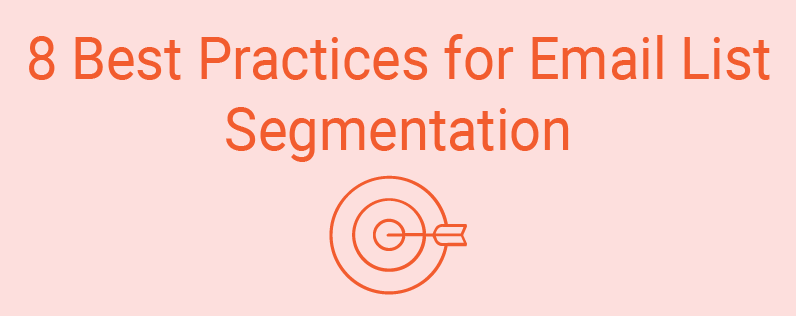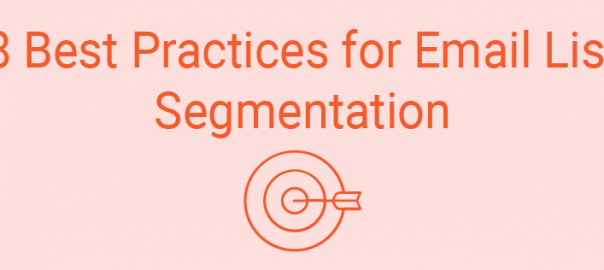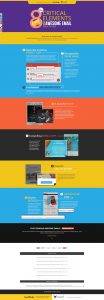— July 31, 2019

No one likes getting irrelevant emails in their inbox.
If a message isn’t a good fit for your recipient, they are more likely than ever to leave it unopened, unclicked—or worse, marked as spam.
List segmentation is a powerful tool for staying relevant and increasing email opens, clicks, and conversions. It allows you to send highly-personalized and relevant messages every time.
Considering that personalized emails generate a median ROI of 122%, adding segmentation to your toolkit is one of the best decisions you can make as a marketer.
What is a segmented list?
List segmentation is about sending the right message to the right people by splitting your master list into smaller segments. These segments can be based on a number of different properties, such as location, industry, language, content engagement, and stage of the funnel, to name but a few. If you have the data, you can probably segment by it. You can also choose several segments for a single email.
Say you have an outdoor clothing company. You could use list segmentation to send a targeted email to women in Canada promoting your new line of women’s hiking shoes with free delivery on orders over $ 50 CAD. A man in London is unlikely to be interested in that message.
So… what are the best ways to segment your email list? And what best practice tips should you follow? Keep reading for some powerful ideas to upgrade your email game…
How to segment your email list
Choosing how to segment your email list depends on your business type, but more importantly, it depends on the people you are selling to. You might choose to segment by:
- Geography: Where are your contacts based? What currency do they buy in? This is particularly relevant for e-commerce businesses.
- Gender: Do men and women require different messages from your company? If you’re a clothing brand, this is useful data to know. For many other industries, such as software, not so much.
- Language: Can you speak to your contacts in their preferred language? If you have a multilingual team, language is a powerful way to segment your email lists. Pro tip—don’t presume a contact’s preferred language based on their location. The world is full of expats and well-traveled folks, so that is not enough to go by. Instead, pay attention to the language of the pages on which your contacts convert.
- Business type: Learn about a contact’s business and industry through custom fields in your forms. Then, tailor your message to the most relevant products and services for them.
- Website activity: Use page-level targeting to understand how a visitor is interacting with your website. You can use that data to send relevant nurturing emails. If a person viewed 10 of your cupcake recipes and subscribed on your Ultimate Cupcake Tower Inspiration blog post, you can probably tell what their interests include.
- Lead magnet interaction: Collect data on the lead magnets that your contacts convert on and engage with, such as ebooks and other downloadables. Also, pay attention to the specific pop-ups and opt-ins they interact with if you’re using tools like Constant Contact’s pop-up forms.
- Stage in your marketing funnel: A new marketing lead requires different messages than a sales-ready lead at the bottom of the funnel. This is one of the most basic (but oh-so-powerful) ways for any business to segment its email list.
- Engagement level: Create segments of highly-engaged contacts based on open-rate and click-rate, or even what they click on. Alternatively, build inactivity segments for unengaged contacts that you could send a re-engagement workflow to.
By following these ideas for segmentation, you have a number of ways to split your email list and achieve more personalized outreach. To ensure that your list segmentation is a success, here are our top best practices for getting the best results from every email.
8 email list segmentation best practices for marketers
1. Choose the right email tool for segmentation
To get started with email segmentation, you need the right tool at hand. With Constant Contact, it’s simple to create segments based on contact activity (e.g. email clicks and opens), list membership, and contact details (e.g. country, job title, contact source, or custom fields).
2. Feed the right contacts into your email list
If your email tool does not have an updated list of the right contacts, you are going to struggle with list segmentation. Solve this problem with a strong two-way contact sync between your tools, especially if you’re collecting your contacts in a different system than Constant Contact, such as a CRM.
3. Keep it as simple as possible
Aim for simplicity, especially when you’re just getting started with list segmentation. To begin with, choose 2-3 segments that will make a big difference without introducing too much complexity. A good starting point is to look at your key buyer personas and identify the main differences between them, such as business type, location, or goals.
4. Label new contacts early on
One of the most valuable list segmentation best practices is to start segmenting your contacts as soon as they land in your CRM or email tool. This could be through custom properties or list memberships based on contact details, demographics, behavior, and communication preferences.
5. Remember user preferences
Make sure to pay attention to your subscribers’ preferences—give your contacts what they ask for, and don’t send them what they don’t want. If you collect data based on preferred email frequency and email types, take the time to create segments for these.
6. Keep your data in sync
One of the most important best practices for list segmentation is keeping your data synchronized and up-to-date. If you can’t rely on your segments and data, you will run into problems. Ensure you’re collecting the right data in your forms, keep organization clean with simple and documented processes, and carry out quarterly data clean-ups.
7. Pair email list segmentation with automation
When you combine email segmentation with automation, you can send the most relevant messages at exactly the right time. Follow our list segmentation best practices in this post to build your segments of recipients. Then, set up email automation to send your newsletters, drip emails, and activity-based emails at the best moment.
8. Track results (and keep an eye on unsubscribes)
You can’t set and forget about segmentation. Set aside a bit of time to track performance and make adjustments. This can be more frequent for new segments and decrease to approximately one check-in per month once you’re up-and-running.
Take a look at what’s going well: which segments are getting the most opens and clicks? Alternatively, keep an eye on what is not performing so well. If you notice a lot of unsubscribes from a particular list segment, it could be a sign that your segment isn’t well-configured or that the particular group of people isn’t a good target for your business.
Email segmentation: your gateway to personalized emails that get opens and clicks
There are two main benefits of email list segmentation for direct marketers: the right people receive the right message, and the wrong people will not receive that message.
If you’re sending one mass email to your entire email list, you’re missing out on results. Use list segmentation to supercharge your marketing team’s performance with every email sent, nurturing contacts down your marketing funnel and towards being your most engaged customers.
Digital & Social Articles on Business 2 Community
(42)







